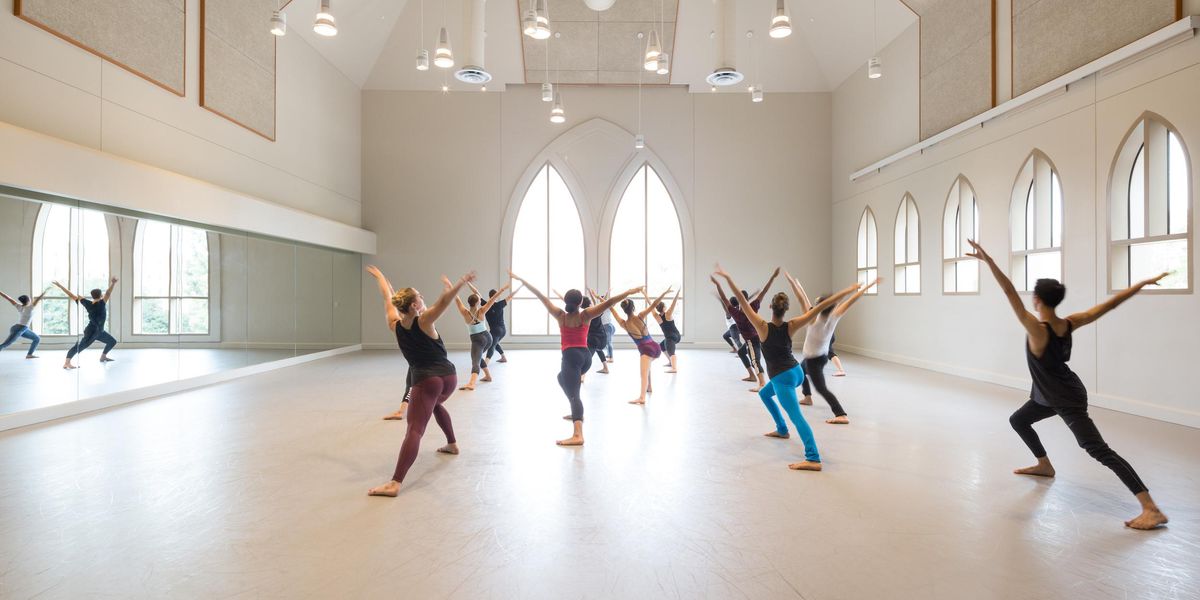On Broadway: It's Show Time
Choreographing NBC’s new
Smash
Megan Hilty in
Smash’s Broadway-hit-in-the-making, Marilyn, The Musical. Photo by Will Hart/NBC.
Television viewers regularly visit the drama-filled precincts of police stations, high schools, emergency rooms, even living rooms. Broadway rehearsal studios? Not so much. But spurred by the success of Glee and a list of big-time producers headed by Steven Spielberg, NBC is taking a flyer on Monday nights with Smash, a new series that traces the creation of a Broadway musical about Marilyn Monroe. (See “Hollywood Falls for Dance—Again,” Oct. 2011.)
Predictably enough, the plot features competing divas (Megan Hilty and Katharine McPhee), harried songwriters (Debra Messing and Christian Borle), a scheming producer (Anjelica Huston), a genius director/choreographer (Jack Davenport), and their assorted spouses, lovers, and associates. Perhaps less predictably, it also features fully choreographed musical numbers that are in the hands of a relative newcomer, Joshua Bergasse.
His high-energy jazz classes are well-known at Broadway Dance Center, where he is on the faculty and where every August he runs a weeklong musical-theater intensive. And his list of choreography credits includes numerous shows at off-Broadway and regional theaters. But his resumé is admittedly thin when it comes to dance for the screen—or at least it was, before he started work on the 15 episodes of Smash.
Still, he says, “I was ready for it. When I interviewed for the job, one of the executive producers asked me how I feel about working for the camera. I said I feel very comfortable, even though I had limited experience. The thing is, I watch TV. I’ve watched all the old musicals. I know what I want to see. I know what I think looks good and what doesn’t look good. I have a very high standard for dance on the screen.”
That said, he concedes that most of the dance in the series is designed not for the camera but for the proscenium. To begin with, there are the numbers from Marilyn, the Musical, the fictional show that is at the center of Smash. And there are the stage numbers from other shows that the characters are involved in, or that they go to see.
“These numbers can stand on their own,” he says. “They don’t need to be filmed. But once you bring the camera in, you can open up a whole new dimension in the choreography. You can really focus.”
But there are sequences that require a different approach—“other types of performances, or sometimes a fantasy where you go into somebody’s head. There’s a lot of things we do that don’t necessarily have anything to do with Marilyn, the Musical.” In one particularly complex number, a present-day rehearsal flashes back to the 1960s shoot of a movie that is set in the 1920s. “And you’re trying to explain to the performers what decade they’re in,” he says with a chuckle.
Bergasse, who grew up in Michigan—“at my mother’s dance school outside Detroit,” he says—began his professional career rather accidentally. While on a family vacation in New York, just to experience a Broadway audition, he tried out for the 1995 national tour of West Side Story. To his shock, he landed the role of Baby John, and spent the next two years dancing the classic Jerome Robbins numbers all over the country. He also became the show’s dance captain, and he’s since set the choreography in many places, including for a recent flash mob in Times Square.
His own choreographic skills began developing back at home, when the Annette and Company School of Dance needed new routines for recitals or dance competitions. When he moved to New York after the West Side Story tour, he kept his hand in, choreographing numbers for friends, benefits, showcases. “You take whatever you can get just to keep yourself busy in the dance world,” he says. “And one thing leads to another, and you realize that you’re a part-time choreographer and a part-time performer.”
Bergasse, who turns 39 this month, “decided to take choreography seriously” around 2003, when he realized the dance jobs wouldn’t keep coming forever. One of those dance jobs was his entrée to Smash—the series’ initial director and creative consultant is the Tony winner Michael Mayer (Spring Awakening), who had hired Bergasse for the out-of-town ensemble of Thoroughly Modern Millie.
Ultimately, Mayer and the other directors of Smash will have far more impact than Bergasse on how his dance numbers look to viewers. He is not the one who will be shooting and editing the choreography he has devised. And the three-at-a-time scheduling frenzy of series television—one episode is in rehearsal while another is shooting and a third is being edited—makes it hard for him to be there when the final cuts are being made.
“There are three directors working at one time. But there’s only one choreographer,” he says. At first, it hurt to see how much of his work wasn’t making it to the screen. Now, he says, working on his 10th episode, he’s more “able to let stuff go.” By the end of the season, he says, the audience will have seen a large sampling of his work.
They also will have seen a large sampling of dancers. All told, Bergasse says, he has hired between 40 and 50 for the show. “Part of what we’re trying to do,” he says, “is make sure it doesn’t look like there are only 10 dancers in New York City.”
Sylviane Gold writes on theater for
The New York Times.




